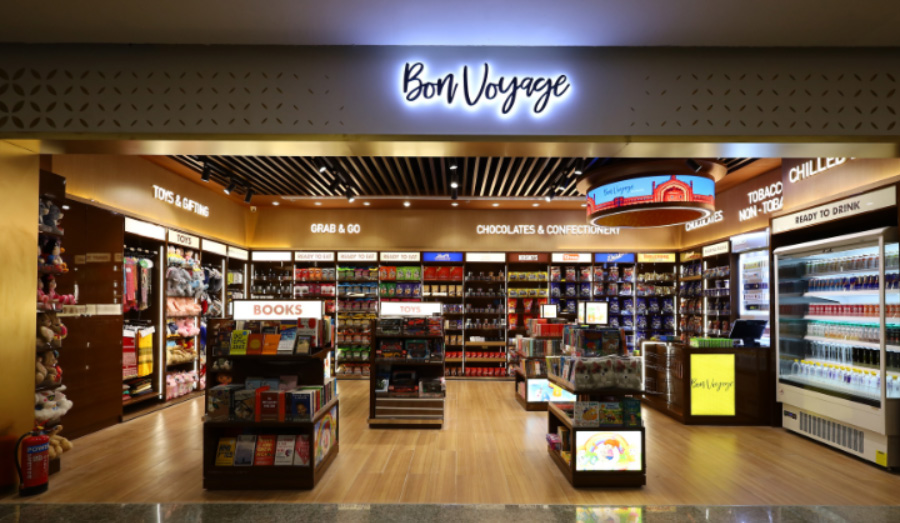Why travel retail may be the next big opportunity for industry
By N Jayalakshmi | May 06, 2024
Travel retail, projected for growth in the next five - six years, is fast emerging as a strategic destination for luxury brands, with many growth projections and major airports creating conducive retail spaces for brands to engage their audiences. This also means exciting and unique new opportunities for retail designers and solution providers.
Luxury brands are fast discovering a strategic new touchpoint to engage, indulge and capture their audiences– airports. According to a Forbes report, travel retail is set to surpass $117 billion in global sales by 2030, growing at nearly +10% annually from 2022.
According to another report, the global travel retail market size was valued at $52.7 billion in 2021, and is projected to reach $187.1 billion by 2031, growing at a CAGR of 9.6% from 2022 to 2031.

Major airports across the world for their part are making sure to offer an experiential space that is conducive for immersive brand engagement. Whether it’s the Schipol Airport in Amsterdam - the fourth largest airport in Europe – which is upgrading its Lounge 2 - or the Chhatrapati Shivaji Maharaj International Airport in Mumbai, airports spaces are turning into premium retail destinations and brands are only too happy to cash in on this to draw their target customers. The Chhatrapati Shivaji Maharaj International Airport space for example has seen a spate of brands tie-ups - from SLAB Ventures Netherlands and AB InBev India announcing the unveiling of D’YAVOL’s first travel retail showcase, to handcrafted leather goods and accessories brand Nappa Dori launching its Departure Store or The Body Shop announcing its plans to expand to 100 more brand touchpoints by focusing on major expansion in Travel Retail among others.
As Avishek Bambi Das, CEO of Mumbai Duty Free Pvt Ltd, recently told Retail4Growth in an exclusive interaction, “I don’t think there is any other channel that will give you 15 million of Mumbai’s top-end customer segment going through its gates,” while talking about the potential in the travel retail space.
Mumbai Travel Retail Private in fact recently announced its rebranding to OSPREE with the aim of “integrating all its duty-free holdings, including Mumbai, Thiruvananthapuram, Amritsar, Lucknow, Jaipur, Ahmedabad, and Mangalore, under one unified brand identity”, reflecting the company’s focus on leveraging the growing demand for travel retail. Indeed, its not just the major airports that are drawing brand interest, but also the tier 2-3 airports that are emerging as strategic opportunities for brands. Travel retail company April Moon Retail Pvt recently announced the opening of its concept store ‘Bon Voyage’ at the newly inaugurated Terminal 3 at Chaudhary Charan Singh (CCS) International Airport in Lucknow.
What this also means are new opportunities for innovation in retail design and experience. LVMH-owned brand Bulgari for instance unveiled a new fragrance counter at the end of 2023 at Rome airport, which is a mix of trained advisors offering specialized services like custom gift-wrapping, pop-up events and vibrant illustrations.
Isabelle Fourmentin, CEO of JCDecaux Airport Paris (a joint-venture between advertising JCDecaux and Paris Aéroport) has been quoted in the Forbes article as explaining, “The trend started in the main Asian hubs such as Shanghai or Singapore, along with the mega-airport at Dubai. European airports have since followed suit, with the major revamp of the Paris airports since 2005. Thanks to a gradual renewal of the infrastructure there, luxury brands now have more spacious stores, often with a highly desirable ceiling height – giving them plenty of room for inspiration.”

This has also seen the integration of digital outlets and interactive shopping experiences by brands. Luxury brand are reportedly investing in delivering engaging content displayed on screens, to draw in the passenger traffic.
As Avishek said, elaborating further on Mumbai Duty Free’s approach to offering a differentiated experience, “There are some key pillars that support the customer experience vision we have. One is the way we use technology - whether in terms of enabling customer access to products or in terms of exciting and entertaining them through engaging displays and the use of 3D technologies. The other pillar is creating what we call ‘speed breakers’ that draw passengers into our space.” This includes live DJs, spirit tasting sessions etc.
Indeed, for retail solution providers and store designers, innovations in terms of concepts and solutions that can help their clients carve a distinct presence in the travel retail space might just be the next big thing round the corner.









Comments